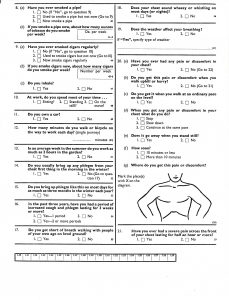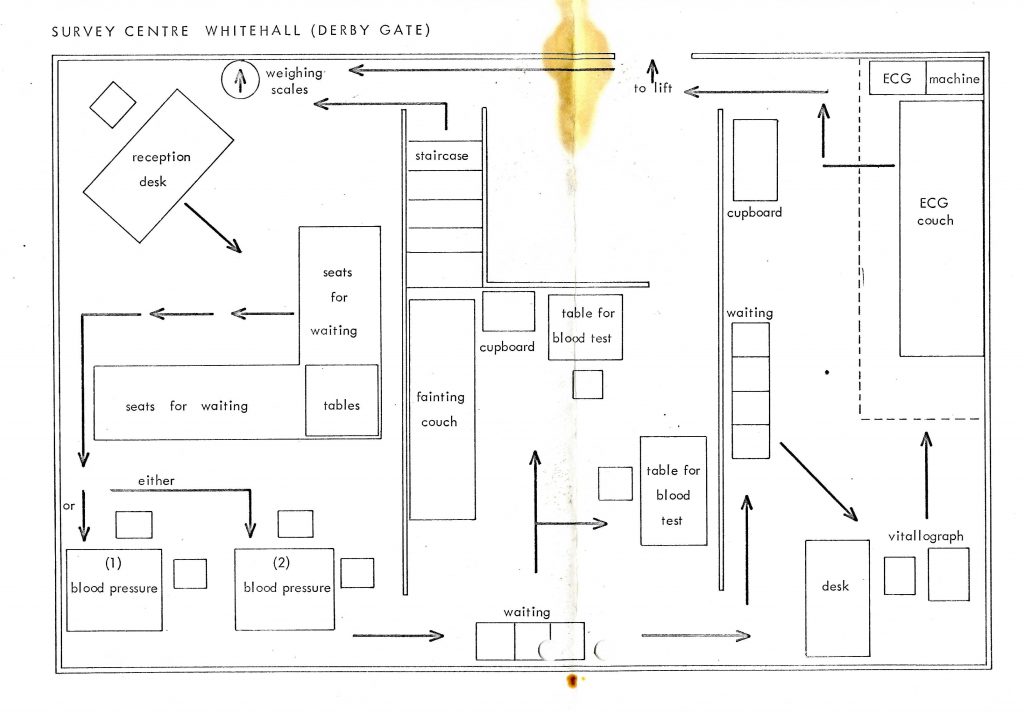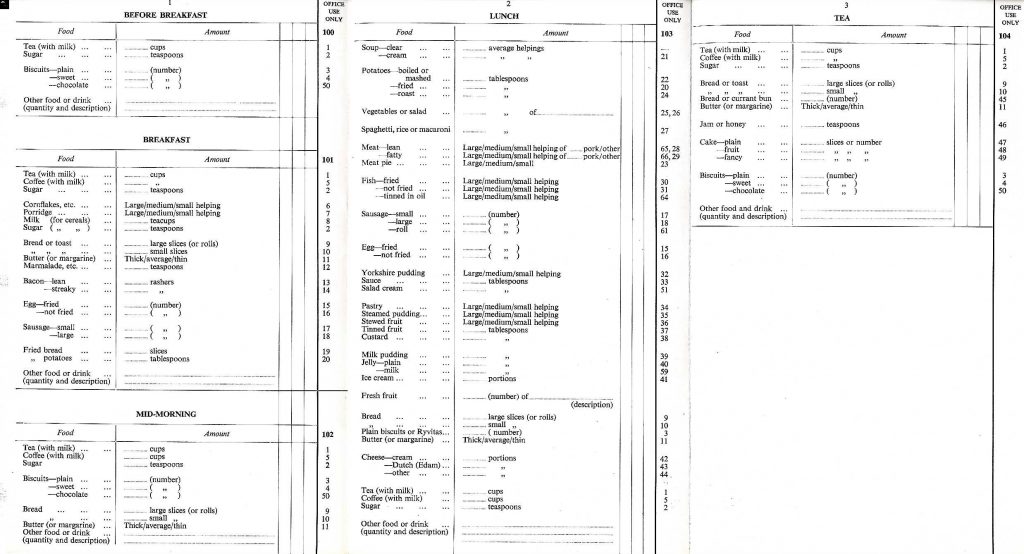Cataloguing Project
The project is a Wellcome Research Resources funded project to catalogue the papers relating to the Whitehall Study. The processes involved in cataloguing a collection can be broadly broken down into three components: preservation, cataloguing and public engagement.
Preservation of the collection includes all the treatments, repackaging and storage requirements needed to preserve the collection in the long term. For Whitehall, this will include small amount of mold removal, paper conservation on some torn papers and a lot of removal of rusty metal staples as well as the re-filing and boxing of the collection into acid free enclosures.
Cataloguing of the collection essentially boils down to listing an archive contents in a way to easily accessible for researchers through our online catalogue. The process involves listing the entirety of the contents, identifying an overarching arrangement within the collection, sorting and then providing a hierarchical description of the collection in line with international standards.
Public engagement work is about reaching audiences who would be potential interested in using collection for research. This work can include reporting and meeting various stakeholders in the School and wider community to developing exhibitions or using social media to raise awareness of the resource.
The project began in early January 2017 and will run until early August 2017, when the collections will be searchable on our online catalogue and accessible in the Reading Room via appointment.
Whitehall Study
The Whitehall Study, led by Professor Donald Reid (1914-1977) and Dr Geoffrey Rose (1926-1993), was designed to detect early risk factors in cardiovascular and respiratory health in its sample group of male civil servants, aged 45-60. The initially survey running from 1967-1970, involved the physical examination of 18403 male civil servants from across the service. This involved a completion of a self-questionnaire covering questions relating to cardo-vascular health, respiratory health, smoking habit and history and previous medical history, followed by a physical examination that included physical measurements, blood pressure reading, blood test for glucose and lipid levels and electro-cardiogram and X-ray examinations. Participants were then monitored over a five-year period for any sickness absence along with registers and causes of participant’s deaths. Death certifications continued to be collected until the early 2000s, with analysis of the mortality rates continuing to this day. Along with the main survey, participants were selected for controlled trials examining the effects of prevention treatments for smokers and dietary changes for participants at risk of diabetes.
Whitehall Study questionnaire [page 1 and 3 of 4 pages] . The survey form had slight variations depending on department [diplomatic service did not include grade information or job title]
The London School of Hygiene and Tropical Medicine Department of Medical Statistics was an established centre of excellence for medical statistics and since the Second World War had developed methods and had the collective expertise to conduct larger longitudinal health surveys. This was partially down to development of more valid measurement methods such as an early prototype for the random zero sphygmomanometer for measurement of blood pressure, the Rose Cardiovascular questionnaire and the Minnesota Code for the classification of electrocardiographic abnormalities (which is still an international standard)[i].
The interest in coronary heart disease (CHD) was due to the high rise of mortality from the disease in the UK, and the industrialised world as a whole post 1945. CHD was the major killer of post-war population and epidemiological work was needed to find the causes of CHD in the working population. Epidemiological studies such as the US based Framingham Heart Study had identified risk factors, such as hypertension, cholesterol levels, smoking and obesity as factors increasing likelihood of the disease. The main conclusions from the Whitehall study showed that CHD risk factors were more common within lower grade civil servants and that they had a relative risk of 2.1 risk of dying from CHD than with those with a higher employment grade. The second Whitehall Study launched in 1985, was set up to find the underlying cause of this difference and the study is going to this day[ii].
What is within the collection?
The collection primarily contains collected data from the study mainly in the form of completed questionnaires but also including rolls of electrocardiogram readings, sickness absence tables, x-ray examination records and copies of participant’s death certificates. Papers also include initial meeting and project documentation setting up the study with senior civil servants at the related departments, along with examination workflows and survey literature.
The second largest section is the data analysis and continued monitoring of the study group, namely tabulated data, calculations, computer printouts of statistical analysis and histograms. Also related to this material are the papers relating to the control group studies carried out after the initial survey period. This includes working papers for the smoking cessation study run by Geoffrey Rose and Dr P Hamilton and also other studies using Whitehall data including comparison of death rate of participants depending on UK regional location.
The collection also includes papers relating to other work carried out in the Department of Medical Statistics, including notably the General Postal Office survey, a precursor cardiovascular survey to Whitehall study. These papers date from early 1950s, contain multiple studies looking at mortality data, sickness absence and incidence of chronic bronchitis, and would appear to include the working papers of Professor Reid (1914-1977) along with later work relating to WHO rates of mortality from late 1980s to 1990s.
[i] Rose, G., Khaw, K.-T. & Marmot, M., Rose’s Strategy of Preventive Medicine (Revised edition ed.
Oxford, UK: Oxford University Press, 2008), Preface, vi
[ii] Reynolds L A, Tansey E M. (eds) (2006) Cholesterol, Atherosclerosis and Coronary Disease in
the UK, 1950 –2000. Wellcome Witnesses to Twentieth Century Medicine, vol. 27. London: Wellcome Trust Centre for the History of Medicine at UCL, p46







